Galleries
Art House: An Introduction to German Expressionist Films
The influence of German Expressionism on the films of Fritz Lang and Robert Wiene.

The influence of German Expressionism on the films of Fritz Lang and Robert Wiene.

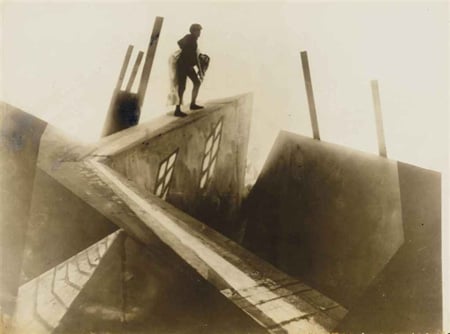
Robert Wiene, Stills for The Cabinet of Dr. Caligari (three works) (1919). Gelatin silver print, sold at Christie’s New York.
Welcome to the first article in Art House, a series detailing the evolution of art house films, and their impact on the relationship between art and cinema. The term art house refers to films that are artistic or experimental in nature, and are generally not part of the commercial mainstream. It is interesting to note that unlike many other forms of avant-garde, filmic avant-garde does not typically generate the profits earned by its musical, visual, and literary counterparts. Most artists who have produced avant-garde films have had to rely on other artistic media as a source of income, including Andy Warhol (American, 1928–1987).1 However, there are several films that have crossed over into the realm of mainstream cinema, and have been both financially successful as well as stylistically influential. This article focuses on German Expressionism, one of the earliest artistic genres to influence filmmaking, and one that arguably paved the way for many other avant-garde styles and techniques.
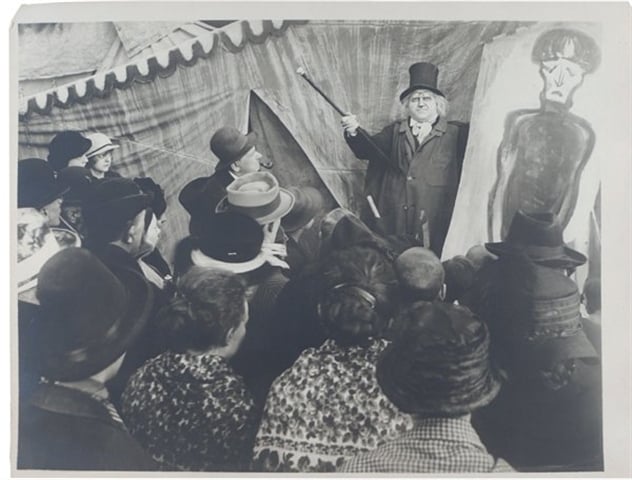
Walter Reimann & Hermann Warm, Le docteur à la foire (from The Cabinet of Dr. Caligari) (1919). Sold at Binoche Renaud-Giquello & Associés.
German Expressionism is an artistic genre that originated in Europe in the 1920s, and is broadly defined as the rejection of Western conventions, and the depiction of reality that is widely distorted for emotional effect. Heavily influenced by artists such as Vincent van Gogh, Edvard Munch, and El Greco, Expressionists were less concerned with producing aesthetically pleasing compositions as they were with creating powerful reactions to their work through the use of bright, clashing colors, flat shapes, and jagged brushstrokes. In its nature, the movement was interested in the relationship between art and society, and encompassed a broad range of fields, including architecture, painting, and film. Expressionist films were initially born out of Germany’s relative isolation during the 1910s, and quickly generated high demand due to the government’s ban on foreign films. The films’ appeal soon spread to an international audience, and by the early 1920s, many European filmmakers had begun experimenting with the absurd and wild aesthetics of German cinema. Two of the most influential films of the era were Metropolis (1927), by Fritz Lang (Austrian, 1877–1961), and The Cabinet of Dr. Caligari (1920), by Robert Wiene (German, 1873–1938). Similar to Expressionist paintings, Expressionist films sought to convey the inner, subjective experience of its subjects.
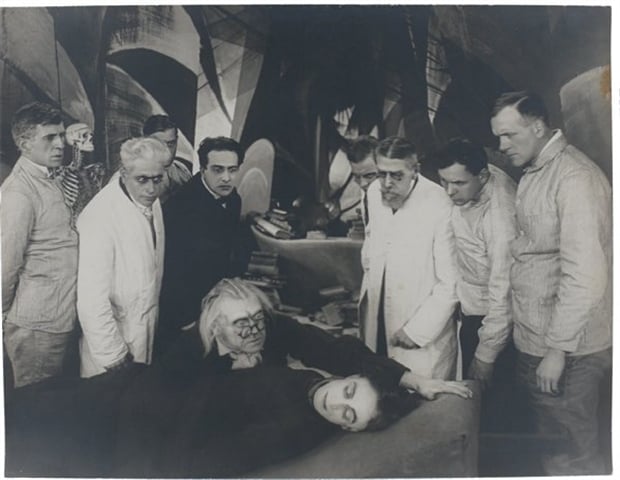
Walter Reimann & Hermann Warm, Caligari découvre l’assassin (from The Cabinet of Dr. Caligari) (1919). Sold at Binoche Renaud-Giquello & Associés.
Filmed in 1920, The Cabinet of Dr. Caligari tells the story of Francis, who, through flashbacks, recounts his terrifying experiences at a carnival in a small German village, where he first encountered Dr. Caligari, a man with the power to control people in their sleep. When Francis’s friend is mysteriously murdered and his fiancée is kidnapped, he pursues Dr. Caligari to an insane asylum, determined to unravel the mystery surrounding these terrible events.
Director Robert Wiene hired Expressionist painters Walter Reimann and Hermann Warm (German) to create the sets. Like many of their contemporaries, Reimann and Warm were interested in challenging Modernism’s formal and stylistic elements, and used Expressionism as a means to experiment with perception, constructing a nightmarish world of jagged lines and incongruous patterns. The film’s use of expressionistic elements is a prime example of the genre’s power to establish a narrative that creates a disconnect between subjectivity and reality. In scenes throughout the film, sidewalks lead nowhere, walls appear warped, creating strange shapes, and buildings rise at distorted angles in the background. Considering the cultural context in which Caligari was created, it makes sense that German Expressionism was such a widely used device in film, visual art, and literature. The sense of anxiety, distrust, and uneasiness were at an all-time high in Germany following World War I, and films such as Caligari were examples of art imitating life.
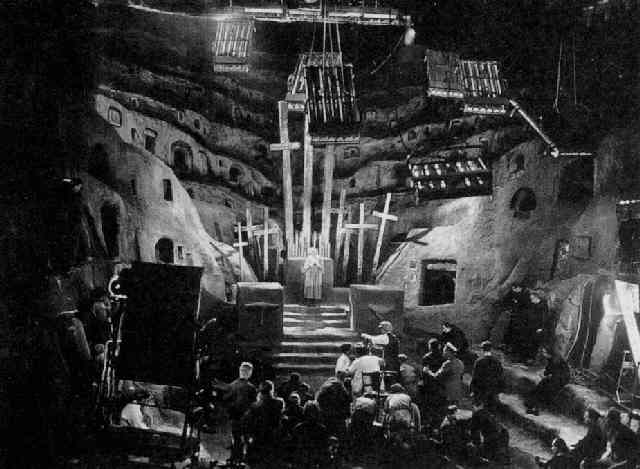
Karl Freund, Metropolis von Fritz Lang, (1925–1926). Sold at Dietrich Schneider-Henn.
Though Wiene’s direction is widely cited as making Caligari into one of the most influential films of all time, he was not the producer’s first choice. Producer Erich Pommer initially campaigned for renowned filmmaker Fritz Lang to be given the job, but due to scheduling conflicts, Lang was forced to decline. However, Lang would later go on to make the equally seminal and groundbreaking Metropolis, one of the last German Expressionist films ever made.
Set in a dystopian future, Metropolis tells the story of two worlds: the upper city, inhabited by the wealthy ruling class, and the underground city, populated by the poor working class, who spend their days toiling on the enormous machines that keep the city running. There is some disagreement among film historians as to whether Metropolis can truly be considered an Expressionist film. Though Metropolis does not contain as much overtly expressionistic imagery as Caligari, the exaggerated movements of the characters, the angular, crowded skyline, and the sharp contrasts between the upper and lower city, all adhere to the Expressionist tradition. Much like the compositions produced by members of the Die Brücke movement, Metropolis depicted the experience of the city as one marked by chaos, tension, and intensity.
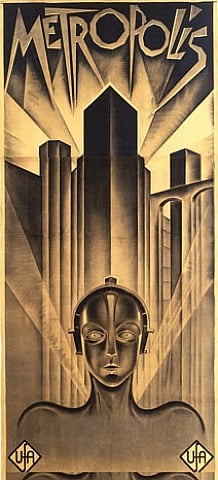
Heinz Schulz-Neudamm, Metropolis (1926). Lithograph, DeLuca Gallery, New York, NY.
Expressionist film in the 1920s was based on the premise that film becomes art only to the extent that the film image differs from reality. This particular interpretation of cinema-as-art would go on to influence some of the most important filmmakers of the 20th century, including Alfred Hitchcock, Werner Herzog, and Tim Burton. The style of seminal Expressionist artists such as Erich Heckel, Wassily Kandinsky, and Emil Nolde perfectly lent itself to cinematic reinterpretation, as one that spoke to the most prevalent cultural conditions of the time. During a tumultuous and difficult period in German history, these talented filmmakers tapped into the popular zeitgeist and created powerful works that have stood the test of time. The films of this era are, in their own way, a revealing look at a society at a particular moment in history, expressing the disillusionment, distrust, and isolation experienced by many people living in Germany at the time.